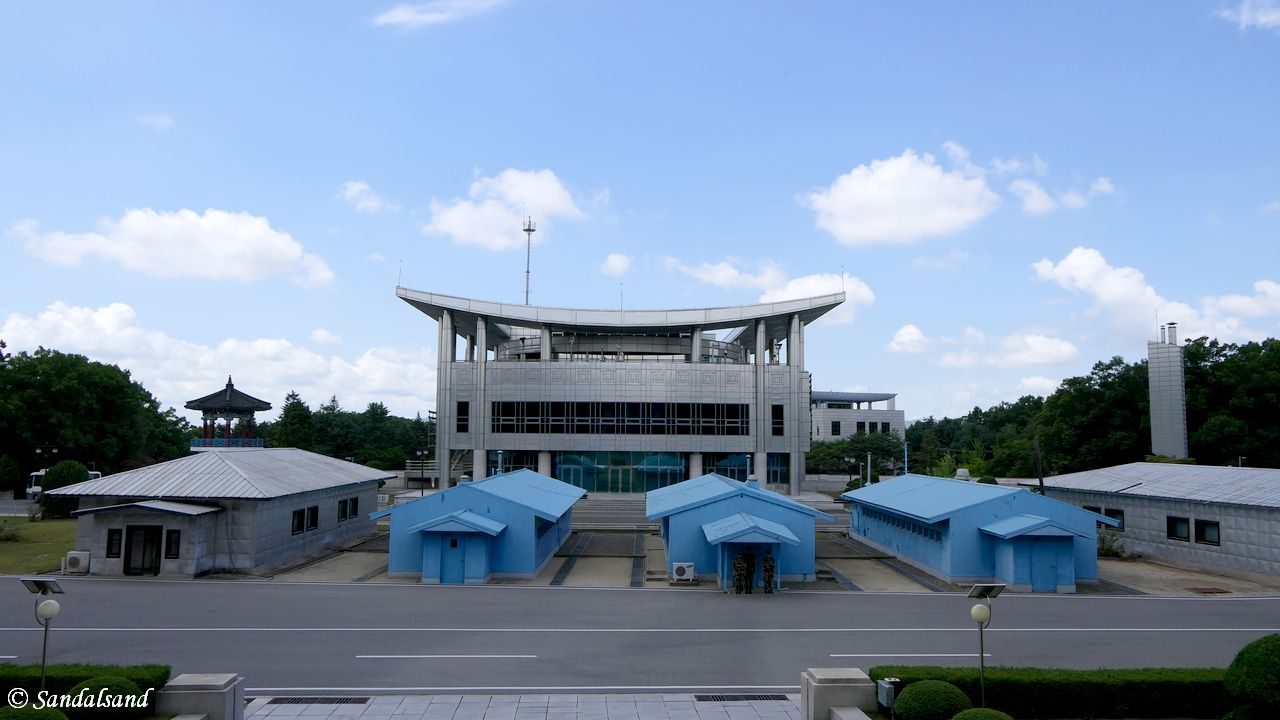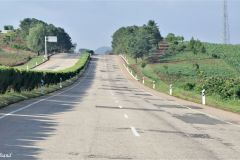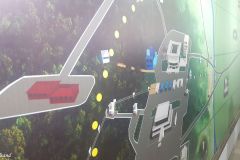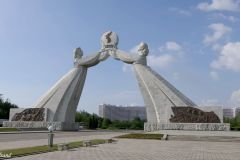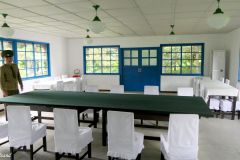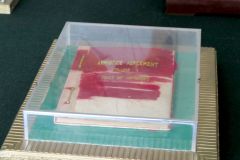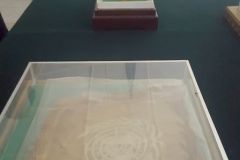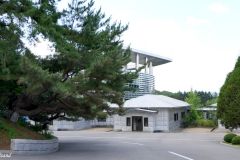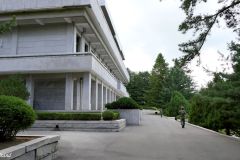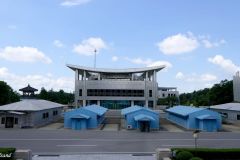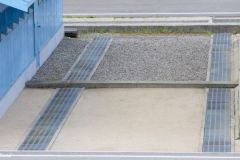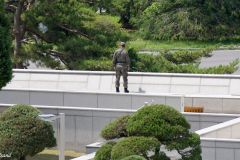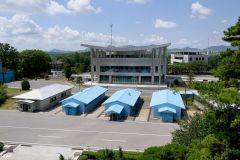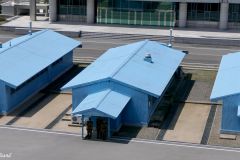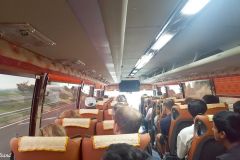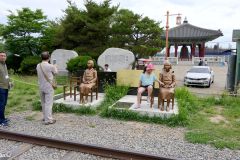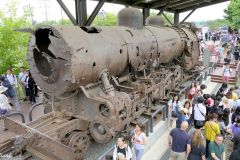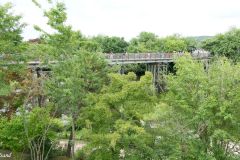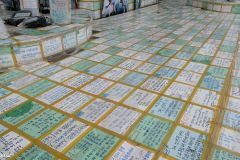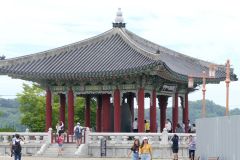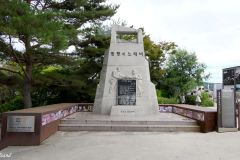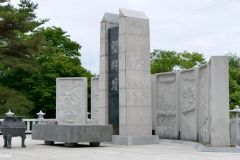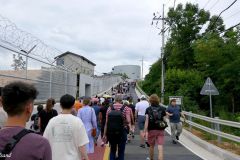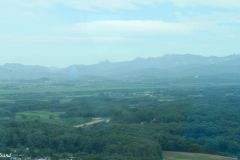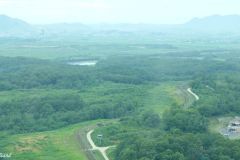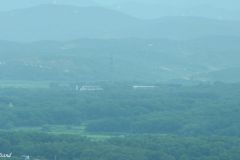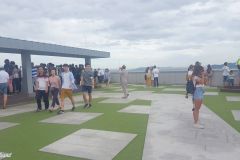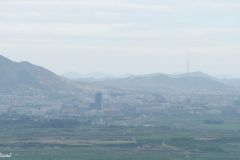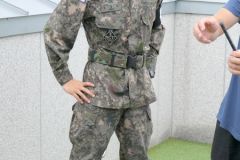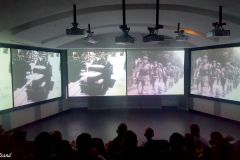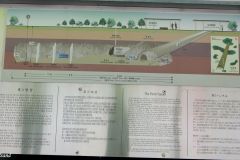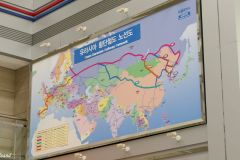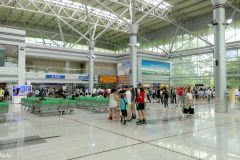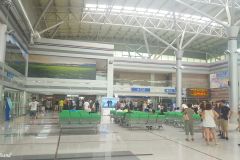The 248 km border between North Korea and South Korea has been labelled the world’s most heavily guarded border. The Korean DMZ is a Demilitarised Zone running the length of it, 2 km wide on each side. It is possible to visit both sides, indeed it is one of the most popular destinations in both countries.
Background
It is known to the world only as the Korean Demilitarised Zone. Within the zone, there are very few civilian and military activities going on. Instead, the zone has over the decades turned into a peaceful wildlife haven. Its origin and cause are all but peaceful.
The terrible war that ravaged the Korean Peninsula from 1950 to 1953 has never really ended. A cease fire culminated with the signing of an armistice agreement. However, a peace treaty has never been agreed upon, and the warring parties are legally still at war. Those who enter the border area are thus entering a war zone.
Before and during the Second World War, Korea was a Japanese colony. Following the Japanese surrender United States bureaucrats drew up a line along the 38th parallel to divide the country into an American and Russian part. The Russians agreed and this became the border until the war broke out in 1950. Who went to war first is matter of dispute between the North and the South. Anyway, the current border follows the front line between the sides in July 1953, roughly along the 38th parallel.
The demilitarised area, two kilometres on each side of the border, is followed by a very heavily militarised zone. Approximately a million soldiers are said to be stationed on either side. On constant alert.
North Korea (DPRK)
Getting there
In 2019 I visited the Korean DMZ first from the northern side, and then about a week later from the south. It is not possible to cross the border at any point, and visits are only allowed on organised tours. Actually, any visit to North Korea will have to be arranged and guided by one of the state agencies.
The road trip from Pyongyang is described in another article. In addition, there is an introductory article about my visit to North Korea (The Democratic People’s Republic of Korea). Here is first an introduction to the stops on the northern side of the border, and then stops on a visit from the south.
“National reunification is patriotism, and national division is treachery to the nation” (Kim Jong Un Aphorisms vol. 1)
Entrance to Demilitarised Zone
After leaving Pyongyang and the huge Reunification Monument we drove on a wide and poorly maintained motorway on our way south past rice paddies and maize fields. We had to make a stop at the entrance to the Demilitarised Zone. I suppose my guides did some formalities with the military here, but I merely walked through a souvenir shop together with busloads of Chinese tourists. In an adjacent room an officer explained on a map the layout of the area ahead of us.
We boarded our buses again and drove into the Korean DMZ on a narrow road lined with anti-tank obstacles.
North Korea Peace Museum
Our next stop was at the North Korea Peace Museum. There are two important buildings here.
The smaller was used to conduct peace talks between the United Nations and North Korea. Here we entered the room and were able to sit down on the very chairs, on the very table that the negotiations were conducted. The next building is considerably larger.
The United States negotiators, leading the UN mission, had suggested that the armistice could be signed inside a tent of some sort. This was not what the North Koreans wanted, so in a matter of a few days they built a proper building. Inside there is only one large room. There are a couple of large tables, where the UN and North Korean leaders would sit down and sign the armistice.
The furniture is still here, also a faded UN flag. The DPRK flag looks a lot fresher in its colours. One copy of the original armistice document is kept in a glass case on a table.
The walls behind the tables are lined with propaganda posters and objects.
Joint security area – Panmungak Hall, Conference Row, view of South Korea
The last stop on a visit to the DMZ from North Korea is the Joint Security Area. This is the very centre of the DMZ, and the only place where the armed forces of both countries face each other.
From the car park (or rather bus park) we walk downhill past a large granite rock showing the last signature of Kim Il Sung. Continuing further downhill we stop in front of the Panmungak Hall, a three-storey building facing the south. Right in front are the series of low buildings called the Conference Row and the actual border. Right behind them is the South Korean building called Freedom House. Behind it, and slightly to the right is another, newer building called the Peace House.
I was disappointed to not being allowed into the buildings on Conference Row. Instead, we were led inside the Panmungak Hall and up to an observation deck on the second floor.
Nonetheless, it was with a sense of satisfaction that I had reached this far. Standing there, I was already looking forward to my planned visit to the southern side of the border, only a week later.
“The motive force of the national reunification is the entire Korean nation.” (Kim Jong Un Aphorisms vol. 1)
South Korea (ROK)
Getting to the Korean DMZ from the south
There are a number of tour agents who provide half-day or day tours from Seoul. I had booked a half-day tour through Get-Your-Guide and was picked up at my hotel in the morning. It was a rather long half-day because we would return to Seoul in the early afternoon.
It was wise to bring something to drink and some snacks because there was no place or time to eat before we returned to Seoul. I went on a full bus with an English-speaking guide. If I had known better, I would have searched for tour operators offering trips for smaller groups.
Bridge of Freedom, Mangbaedan Memorial Altar, 30 Years Lost Memorial
Our first stop was at Imjingak, a park with several monuments and memorials related the Korean War. There is also a restaurant and an amusement park. On top of the restaurant building there is an observation deck that one should climb. It provides a great overview of the primary sights on this stop.
The first attraction, and a quite odd one, is an old steam locomotive. This bullet-ridden old engine was pulled up from a ditch somewhere and put on the tracks leading onto the remains of a former railway bridge. There is a new railway bridge running parallel to it, and both cross a river.
Between the two and fenced off on the end that approaches the new railway line, there is a wooden bridge across a small stream. The Koreans built it to facilitate the exchange of POWs after the Korean War.
The third attraction, or rather set of attractions, are the monuments. The most important is the Mangbaeddan Memorial, and next to it is the 30 Years Lost Memorial. There are also more statues, and on the walls of the restaurant buildings there are posters and hand-written notes (in Korean). All of these are related to the division of Korea, and to bring forward memories of families that stayed behind on the other side after the war.
This bridge is not to be confused with the Bridge of No Return, which lies directly on the border and is completely closed for tourists.
Dora Observatory
Our second stop was another observation deck, this one on top of a hill. By now we had passed military checkpoints, had our passports examined, and we had entered the Korean DMZ itself.
The Dora Observatory provides a splendid panorama of the border area. In the distance lies the southernmost mountains of North Korea, and at the foot of them the city of Kaesong. A river meanders along this western part of the border, there are fences and various buildings within eyesight. To the right I was able to spot the buildings in the Joint Security Area which I had visited the week before.
There are also some really strange symbolic villages and rice paddies in the distance. Amidst all of this, and unseen to us all, there are mine fields. Warning-signs greet us on the way up.
The 3rd Infiltration Tunnel
The third stop on this excursion from Seoul brings us even closer to the border, and even directly beneath it. More or less. The South Koreans have discovered four of what they call “Infiltration Tunnels” in various places along the border. In the south they call them tunnels of aggression. The explanation in the north is that they are coal mines.
The South Koreans discovered this tunnel, and the other tunnels in the 1970’s and claimed that this provided evidence that North Korea was preparing for an invasion of the South. The South Koreans detected an underground explosion and started digging. After a few months they found an unfinished tunnel, about 1,635 metres long, and two metres high and wide. It runs about 73 metres below ground and would provide an opportunity for the aggressors to send up to 30,000 soldiers an hour through it.
There is a long steep incline (350 m) leading from the parking lot into the tunnel. I noticed that the return was heavy on the breath of many visitors. At the bottom the tunnel itself runs 265 metres until a concrete blockade stops us from venturing further. From here there is only a distance of 170 metres to the actual border (the military demarcation line).
All visitors are provided with hard hats which come in useful, because the height is actually considerably less than two metres.
Dorasan station
The last stop on my tour to the Korean DMZ from the south, was at a railway station. The Dorasan station serves a dream, or rather a future vision of connecting the two Koreas and even the rest of the world.
Huge posters outside and inside reveal that there is a wish to reunite the divided country, and to establish a railway link to China, Russia and even Central Asia and Europe. The station building is new, it has everything you would expect from a station of this kind. On the other hand, there are only a few daily trains to Seoul.
Conclusion, and a comparison of the two visits
It felt kind of strange to visit this border. Both sides nourish an intense wish of reunification, and both sides prepare for war. Indeed, they are at war. In the meantime, we the tourists are allowed to enter the war zone and discover what the countries want us to discover.
Neither visit felt intimidating or dangerous, but they were different. I was happy I visited the north first because the southern DMZ visit was slightly disappointing. I had wished for a step into the buildings on the border. On the other hand, there are so many tourists who visit the Korean DMZ each day, that it would have been impossible to control the crowds.
So, let the presidents and negotiators do their work inside the blue-coloured buildings, and let us all hope for peace someday.

